Academy Contributors
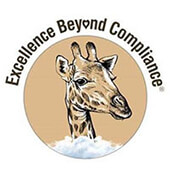 Getting Better All the Time Getting Better All the Time
Shining a Light on Others' Good Works
By James F. Gesualdi
To keep ahead, each one of us, no matter what our task, must search for new and better methods—for even that which we now do well must be done better tomorrow.
—James F. Bell
It's good to be recognized for doing good work. It's particularly good because it provides an opportunity for a reality check or reflection. Most good comes about because of the efforts of countless people (and even animals), whose contributions and inspiration may be unreported. There are all those special, kind, and thoughtful souls who intervened or interjected an encouraging word or a nudge in the right direction. Those seemingly small things are among the simple actions we can take every day to help others on this journey with us.
As I am grateful for this platform to disseminate ideas, and mindful of the responsibility it entails, this is a good time to point out some within or around the zoological community whose good works warrant our appreciation.
Animal Caregivers
You are called to give of yourselves every day to the animals entrusted to your care. Your efforts make a difference for animals. That is good, and it is what we all aspire to be able to do, although most of us can only do so indirectly, at best.
U.S. Department of Agriculture Animal and Plant Health Inspection Service Animal Care Inspectors
You go everywhere, in every sort of situation, with all kinds of animals and people, and must know and apply the "blue book" of Animal Welfare Act (AWA) regulations that I am still learning after 30 years. You work to administer the AWA and evaluate compliance. Though there may sometimes be respectful differences, when engaged constructively, your oversight fosters accountability and helps us to continue to improve our work in service to animals.
Animal Law Colleagues; American Bar Association, Tort Trial and Insurance Practice Section, Animal Law Committee; New York State Bar Association Committee on Animals and the Law; Florida Bar Association Animal Law Section
You have challenged me and many others in countless ways, taught us, afforded us opportunities and friendships, and rendered timeless service to animals (and even people like me). When there may be differences, it points the way for me to become better.
Here are just a few colleagues who have moved me recently.
Michael Clifford, curator of innovation and partnerships, GLMVZoos Architecture
Michael's good heart, sharp mind, and experience as an animal caregiver have helped him elevate the conversation within the zoological community about our future. The monthly ECHO calls he hosts are a great source of ideas and inspiration from colleagues, as well as lessons from outside the zoological world. For more information on the monthly ECHO calls (now co-hosted with Zoo Advisors), email Mike Clifford at mclifford@glmv.com.
On a recent call entitled "Diversity + Engagement," Tanya Paul, animal curator, Oregon Zoo, spoke eloquently about our need to engage our local communities "with grace and humility" (which is also great advice for living a meaningful life of service).
During another call about "Thriving by Design," Dr. Cheryl Meehan and Dr. Brian Greco, AWARE Institute, spoke about designing to enhance animal welfare. That discussion made clear the importance of factoring the animals and their well-being into everything we do. It also brought to mind their groundbreaking, multi-organizational elephant welfare research. Such efforts are challenging, but worth the investment in improving animals' lives.
The zoological community is a caring community. Our work together is made better by the thoughtful efforts of people like Michael, Tanya, Cheryl, Brian, and you. Thank you for the good you do for animals and the inspiration you provide to me.
Don't work for recognition, but do work worthy of recognition.
—H. Jackson Brown, Jr.
© 2019 James F. Gesualdi, P.C. The opinions expressed herein are solely those of the author. This is not, nor should it be construed as, legal advice.
For more information on Excellence Beyond Compliance®, visit excellencebeyondcompliance.com.
 Something Fishy Is Going On Something Fishy Is Going On
By Dr. Rob Jones, "The Aquarium Vet"
Ultraviolet Radiation (Part 2)
There are two main agents used for water sterilization and pathogen reduction in aquarium and zoo systems. The first is ultraviolet (UV) radiation and the second is ozone. In my last newsletter column, we looked at what UV radiation is.
Artificial Production of Ultraviolet Radiation
UV radiation is usually produced in a mercury (Hg) vapor lamp. An electrical current passes through the mercury vapor and excites the electrons in the mercury atom. This excess energy (photons) is then released as UV radiation of a specific wavelength, dependent on the gas (in most cases mercury) and the electrical voltage used.
UV lamps are housed within lamp sleeves that are tubes of quartz silica. The sleeve is open at both ends to allow for water flow. The distance between the exterior of the lamp and the interior of the lamp sleeve is usually about 1/4 inch (1 centimeter).
Here's a diagram showing the production of UV radiation.
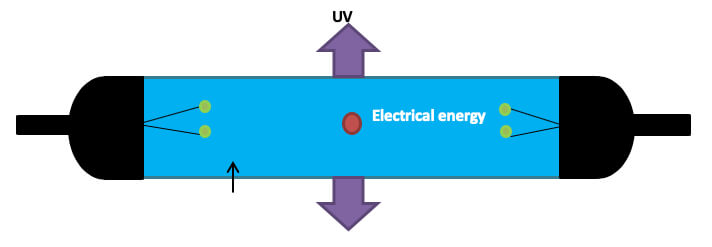
There are generally two types of UV units available:
Low Pressure
Low-pressure UV units operate at a low vapor pressure of mercury and a moderate temperature of about 104 degrees Fahrenheit (40 degrees Celsius). About 95 percent of the UV produced has a wavelength of 253.7 nm (monochromatic). Note that this is very close to the wavelength at which DNA absorbs UV-C most effectively (260 nm). These units are generally inexpensive to purchase, compared to medium-pressure units. The output of low-pressure UV units ranges from 40 to 280 watts, with up to 100 watts per meter of lamp length. At this range, some DNA repair can occur influenced by exposure to light and the enzyme photolyase.
Low-pressure UV units convert a greater percentage of their energy input to producing UV-C (the germicidal UV) than a medium-pressure UV unit (see below).
Medium Pressure
The second type of UV unit operates at a medium vapor pressure of mercury and a much higher temperature of 1,112 to 1,652 degrees Fahrenheit (600 to 900 degrees Celsius). This high operating temperature can add a significant amount of heat to the water as it passes through the unit. Medium-pressure units usually emit UV over a much broader spectrum wavelength (polychromatic) and with a higher intensity. These different wavelengths can cause more than just damage to the DNA and will affect other biomolecules (such as the repair enzyme photolyase). This, then, decreases the likelihood of the DNA repairing itself, thus increasing the percentage kill rate.
Medium-pressure UV units produce approximately 15 to 20 times the UV output, and hence are more likely to be used on larger systems.
Medium-pressure UV units generally require a smaller footprint than the low-pressure units. However, they have a higher energy input and lower efficiency. The bulb life is also usually shorter, so they are expensive to operate. The output of medium-pressure UV units ranges from 1,000 to 8,000 watts, with up to 10,000 watts per meter of lamp length.
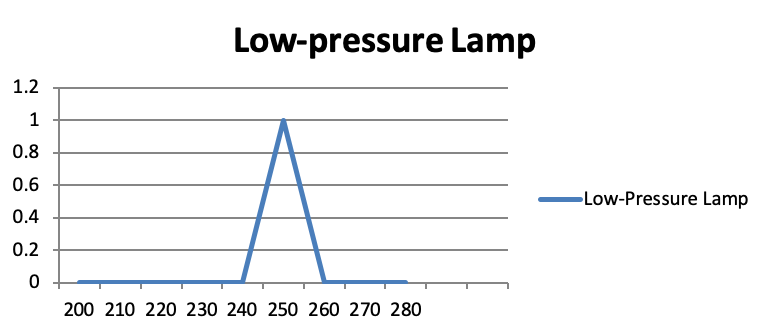
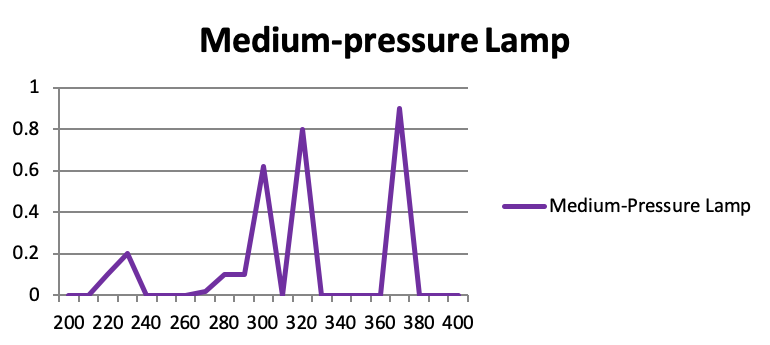
Wavelength charts showing the difference between the two types of UV units. Vertical axis represents the lamps power output relative to the maximum output in the range.
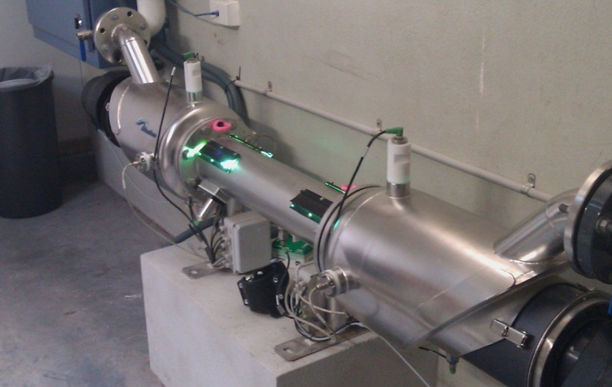
Large UV unit
Next month, we will finish this three-part series on UV. It was terrific to meet so many of our students at RAW in Columbus, Ohio last month. Congratulations to the organizers for an excellent week.
E-quarist™ Courses—Academy Subscriber Special!
The San Diego Zoo Global Academy is excited to share an additional Academy subscriber benefit regarding our collaboration with The Aquarium Vet: as an Academy subscriber, you are now entitled to a discount on the e-quarist™ courses. We are also happy to offer one of our free monthly webinars.
For more information about the SDZGA discount, or anything about the e-quarist™ course, including next month's free webinar, please contact katrina@theaquariumvet.com.
|